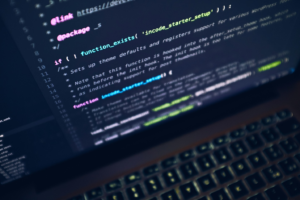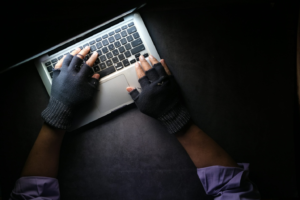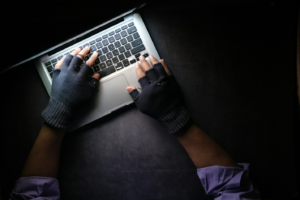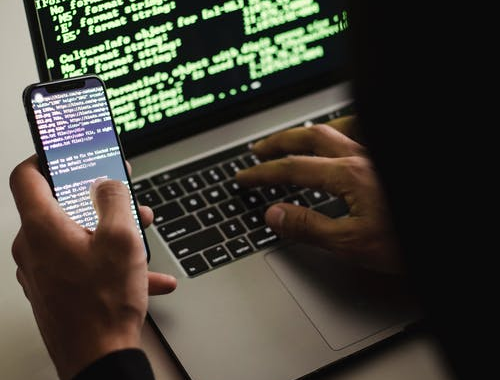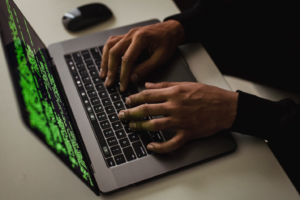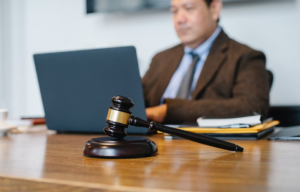Welcome to the hidden realm of the internet, where anonymity cloaks activities in the shadows, presenting a labyrinth of forensic challenges. As digital forensic experts at Eclipse Forensics, we delve into the enigmatic world of the dark web, uncovering the intricate methodologies and complexities faced when investigating illicit activities. Should you require professional assistance in navigating these intricate paths, don’t hesitate to contact us for specialized digital forensic services tailored to your needs.
Understanding the Dark Web
The dark web, a clandestine network existing beyond the reach of conventional search engines, operates on encrypted networks like Tor. Here, anonymity reigns supreme, fostering a haven for illegal activities. As digital forensic experts, we confront the challenge of penetrating these encrypted layers to uncover criminal behavior while adhering to legal boundaries.
1. Tracing Illicit Activities
Unraveling the threads of illicit activities within the dark web demands specialized skills and tools. Our expertise in dark web forensics allows us to navigate these murky waters, employing advanced methodologies to trace illegal transactions, illicit marketplaces, and other nefarious activities while maintaining the integrity of evidence.
2. Decrypting Anonymity
Decrypting anonymity within the labyrinthine corridors of the dark web stands as a paramount challenge in forensic investigations. At Eclipse Forensics, our cyber forensic experts are equipped with advanced technical capabilities to navigate through anonymity’s cloak, decipher pseudonymous identities, and trace digital footprints—key elements in identifying perpetrators involved in criminal enterprises within the encrypted spaces of the dark web.
The Dual Nature of Anonymity
Anonymity within the dark web presents a dichotomy:
Shield: It provides a shield for individuals engaging in illegal activities, masking their identities and activities behind layers of encryption and anonymity tools.
Hurdle: Simultaneously, it poses a hurdle for forensic experts, making it challenging to attribute actions to specific individuals and trace the origins of illicit activities.
Technical Prowess in Deciphering Anonymity
Our cyber forensic experts possess specialized skills and employ advanced methodologies to decrypt anonymity:
De-anonymization Techniques: Utilizing sophisticated tools and methodologies to peel back layers of encryption and anonymization, revealing the true identities behind pseudonyms used within the dark web.
Metadata and Digital Traces: Tracing digital footprints left behind, such as IP addresses, timestamps, and communication patterns, to establish connections and identify individuals involved in illegal activities.
Behavioral Analysis: Examining behavioral patterns and digital signatures to attribute actions to specific individuals or groups, aiding in identifying perpetrators.
Tracing Digital Footprints
In the pursuit of identifying individuals within the encrypted spaces of the dark web, our expertise extends to:
IP Address Tracing: Tracing and analyzing IP addresses associated with transactions, communications, or activities to pinpoint geographical locations or networks.
Communication Analysis: Scrutinizing patterns and content within communications to establish relationships and connections between individuals or groups involved in criminal enterprises.
Transaction Tracing: Tracking digital currency transactions or financial activities to unravel money trails and establish links to illegal dealings.
Importance in Identifying Perpetrators
Deciphering anonymity plays a pivotal role in:
Attribution of Actions: Establishing accountability by linking actions to specific individuals or groups is crucial in legal proceedings.
Preventing Recurrence: Identifying and apprehending perpetrators helps in preventing future illegal activities within the dark web.
For dark web forensics, reach out to the digital forensic experts at Eclipse Forensics now!
3. Gathering Evidence
Gathering admissible evidence from the depths of the dark web presents a myriad of challenges, from encryption barriers to the anonymous nature of transactions and communications. Within this clandestine environment, our proficiency in forensic video analysis and specialized expertise in extracting data from obscured sources play a pivotal role in securing crucial evidence essential for legal proceedings in the digital realm.
Challenges in Evidence Retrieval
The dark web’s encrypted and anonymous nature complicates the process of evidence collection. The challenges include:
Encryption and Anonymity: Transactions, communications, and data within the dark web are shielded by layers of encryption, hindering straightforward access.
Obfuscated Sources: Illicit activities often take place in obscured corners of the web, making the retrieval of pertinent evidence a complex endeavor.
Dynamic Nature: The constantly evolving landscape of the dark web necessitates adaptability and expertise in navigating new trends and methodologies used by perpetrators.
Forensic Video Analysis
Video content, despite its encrypted or obscured origins, can serve as a crucial piece of evidence in investigations. Our expertise in forensic video analysis encompasses the following:
Deciphering Encrypted Videos: Specialized tools and methodologies enable us to decrypt and analyze video content obtained from the dark web, unveiling critical information.
Enhancement and Reconstruction: Through advanced techniques, we enhance video quality, clarify obscured elements, and reconstruct sequences, ensuring a comprehensive understanding of the evidence.
Metadata Analysis: Examining metadata associated with videos aids in establishing authenticity, origins, and timestamps, which are crucial for corroborating events.

Extracting Data from Obscured Sources
Our proficiency extends beyond standard data extraction methodologies. We specialize in:
Advanced Data Extraction: Employing cutting-edge tools and techniques to retrieve information from sources intentionally obfuscated or hidden within the dark web.
Anomaly Detection: Identifying anomalies or patterns within extracted data that could signify illegal activities, providing valuable leads for investigations.
Bolstering Legal Proceedings
The evidence obtained through forensic video analysis and data extraction serves as a cornerstone in legal proceedings:
Substantiating Cases: The admissible evidence gathered bolsters the credibility of cases, providing concrete proof of illicit activities and connections within the dark web.
Expert Testimony: Our expertise allows us to offer informed and reliable testimony, aiding courts in understanding complex digital evidence.
4. Mobile Device Forensics
In the intricate landscape of the dark web, the ubiquity of mobile devices serves as a pivotal gateway to clandestine activities. The profound integration of smartphones and tablets into our daily lives extends seamlessly into the obscured realms of the hidden web, presenting both challenges and opportunities for forensic investigation.
At Eclipse Forensics, our specialized focus on cell phone forensics encapsulates a multifaceted approach to extracting and analyzing data from these devices. The importance of mobile device forensics cannot be overstated in the context of the dark web, where these devices often act as conduits for illegal activities, communication, and transactions. Get in touch with us today!
Extracting Crucial Data
Mobile devices harbor a treasure trove of information that can be pivotal in uncovering connections to illicit activities within the dark web. Our cell phone forensics experts possess the technical prowess and cutting-edge tools necessary to extract a wide array of data, including:
Call Logs and Messages: Uncovering communication trails can reveal vital connections between individuals involved in illicit dealings.
Internet History and Downloads: Examining browsing history and downloaded content can unveil access to hidden marketplaces or illegal materials.
Location Information: Tracking geographical data can establish links to specific events or transactions.
App Data and Usage: Analyzing application data provides insights into the tools and platforms used for illegal activities.
Analyzing and Interpreting Evidence
Once data is extracted, the meticulous process of analysis begins. Our experts delve deep into the retrieved information, employing sophisticated techniques to:
Reconstruct Activities: Piecing together fragmented data to reconstruct timelines and sequences of events related to criminal activities.
Establish Connections: Identifying patterns and connections between individuals, transactions, and activities within the dark web.
Validate Evidence: Ensuring the authenticity and integrity of the data retrieved for admissibility in legal proceedings.
Overcoming Encryption and Security Measures
The dark web’s cloak of anonymity often extends to the security measures implemented on mobile devices. Our expertise encompasses navigating through encryption barriers and bypassing security protocols to access crucial data while preserving its integrity—a critical aspect of mobile device forensics in dark web investigations.
Enhancing Investigations and Legal Proceedings
The comprehensive insights garnered from mobile device forensics serve as invaluable assets in legal proceedings. By presenting irrefutable evidence obtained from these devices, forensic experts play a pivotal role in strengthening the case against perpetrators involved in illegal activities on the hidden web.
Shedding Light on the Dark Web
As we navigate the labyrinthine pathways of the dark web, the challenges faced by forensic experts magnify the importance of specialized skills and tools in investigating criminal activities in these obscured realms. For tailored digital forensic services and expert assistance in navigating the complexities of the dark web, reach out to Eclipse Forensics. We are committed to shedding light on the shadows and bringing justice to the digital frontier.
In the depths of the dark web lie mysteries and challenges that demand a unique set of skills and expertise. Should you require guidance or assistance in navigating this obscured landscape, our team at Eclipse Forensics stands ready to provide specialized digital forensic services tailored to your needs.





